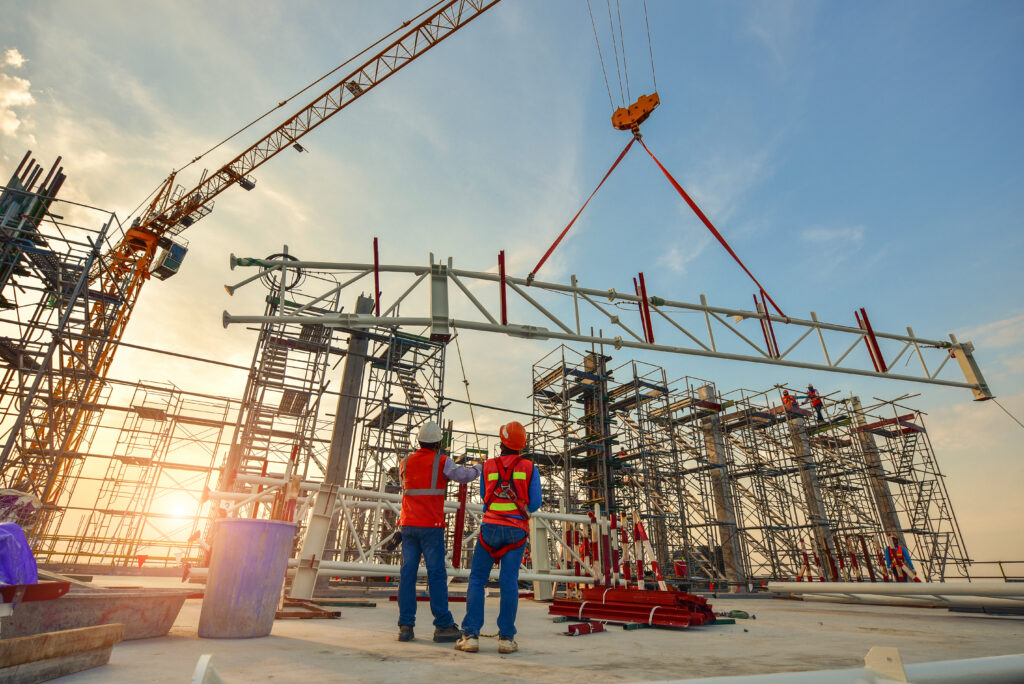
Commercial construction projects, while diverse in their needs and end goals, often follow a similar roadmap. From towering skyscrapers to spacious shopping malls, each commercial construction project follows a well-defined set of stages to ensure its successful completion. These stages not only require meticulous planning but also the coordination of various trade professionals and resources.
In this blog, we will explore the seven main stages of any commercial construction project, shedding light on what happens at each step of the journey.
Stage 1: Design
The first stage of a commercial construction project is the design phase. This is where the project concept and vision takes shape. During this phase, the client places a project for bidding and works closely with architects and engineers to create detailed plans and specifications. The design phase involves conceptualizing the project, creating blueprints, and addressing important factors such as zoning requirements, building codes, and environmental considerations.
Stage 2: Pre-Construction
After the design is finalized and approved, the project moves into the pre-construction phase. This stage involves a series of essential tasks, including securing permits and approvals, developing a project schedule, and assembling a project team. The project team typically consists of the general contractor, subcontractors, and other key stakeholders. Budgets are also established during this phase, helping to ensure that the project remains on track financially.
Stage 3: Procurement
The procurement stage involves the selection and acquisition of materials, equipment, and subcontractors needed for construction. This step is crucial for maintaining project efficiency and quality. It includes issuing requests for proposals (RFPs), evaluating bids, and awarding contracts to qualified subcontractors and suppliers. Effective procurement ensures that the right resources are available at the right time.
Stage 4: Construction
Construction may begin once plans have been drawn up, permits have been acquired, and resources have been procured. The first and most important step is site reparation including pouring the concrete foundation. The building’s framework, roof, and siding follow. Inside, the electrical, plumbing, and HVAC systems are intricately installed before the internal aspects such as walls, flooring, windows, doors, and lighting fixtures are installed
Simultaneously, exterior work progresses, including the creation of external walls, window placement, and door installation. This phase significantly influences the building’s aesthetics and overall impression.
As construction advances, temporary structures are removed, and landscaping is completed. This final touch enhances the site’s appeal, obscures construction signs, and provides aesthetic value. The construction phase is where the project’s functionality, appearance, and ultimate success converge.
Stage 5: Commissioning
As construction nears completion, the commissioning phase begins. Commissioning involves testing and verifying that all systems and components within the building work correctly and efficiently. This includes everything from HVAC systems to electrical, plumbing, and safety systems. It ensures that the building is not only structurally sound but also functional and safe for occupancy.
Stage 6: Post-Construction (Punchlist Inspection)
The final stage of a commercial construction project is project closeout. During this phase, all loose ends are tied up. This includes obtaining final inspections and approvals, addressing any remaining punch list items, and delivering all project documentation to the owner. Once the client is satisfied, the project is officially closed out, and the general contractor hands over the keys.

Stage 7: Owner Occupancy
The owner occupancy phase in commercial construction marks the rewarding moment when the client takes possession of the completed building. With the facility now completed and ready for its intended use, it’s a great achievement. While it’s a time for celebration, it also brings the responsibility of managing and maintaining the property to ensure it operates smoothly and efficiently, underlining the long-term commitment that follows the construction journey.
Commercial construction is a complex and highly coordinated process that involves multiple stages, each with its unique challenges and objectives. From the initial design concept to the final project closeout, successful commercial construction projects require meticulous planning, skilled professionals, and effective project management. Understanding these seven main stages is crucial for anyone involved in the industry, whether you’re a client, architect, engineer, or contractor. Luckily, the skilled team at Divsion 9 Commerical construction can help you achieve your project goals. Contact us today to begin your project vision.
